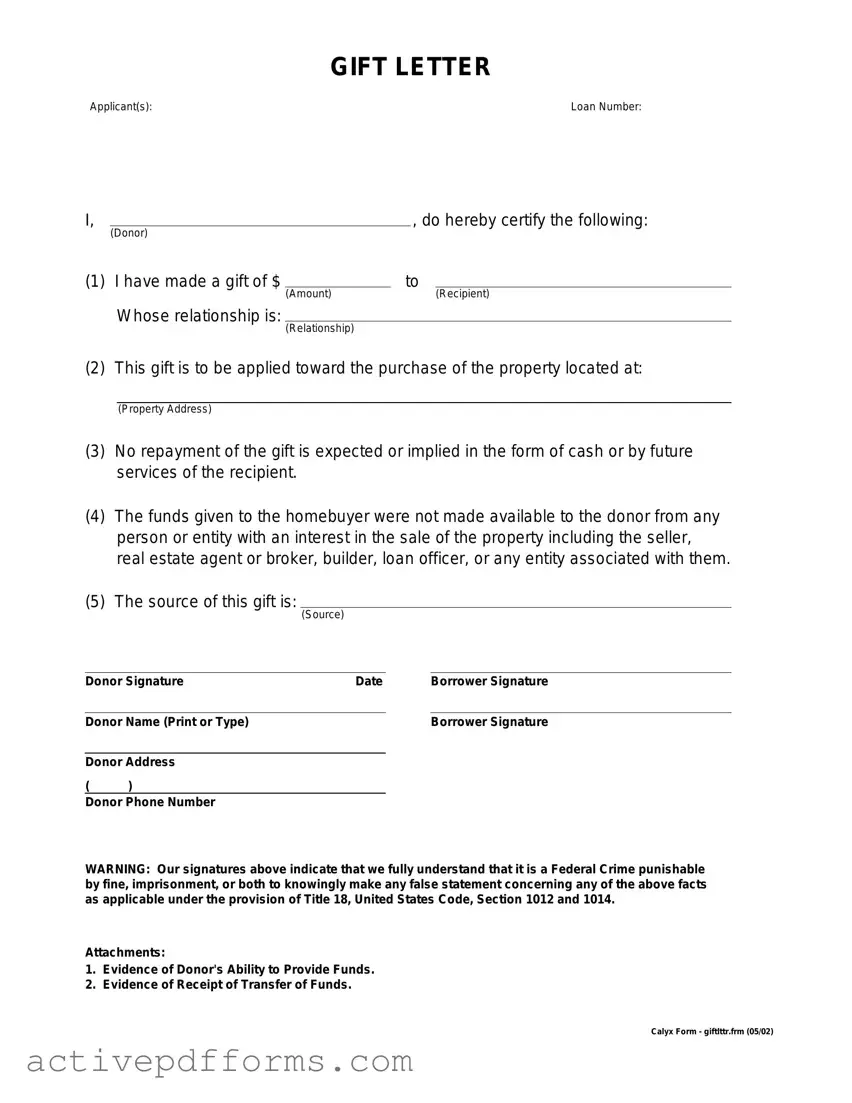When it comes to receiving financial gifts, particularly those intended to assist with down payments on a home, the importance of documenting this transaction cannot be overstated. This is where a Gift Letter form becomes an essential tool. Serving as a formal declaration, it provides clear evidence that the money received is not a loan but a gift, free from any obligation of repayment. Lenders require this document to ensure that the gift does not covertly inflate the buyer's financial health, potentially misrepresenting their ability to afford the mortgage. The Gift Letter must include specific information: the donor's name, relationship to the recipient, the gift amount, and a clear statement that no repayment is expected or required. Additionally, both the donor and recipient must sign the document, further solidifying its legitimacy. By laying out these details, the Gift Letter form plays a critical role in the home buying process, ensuring transparency and compliance with lender requirements, as well as providing peace of mind to all parties involved.

